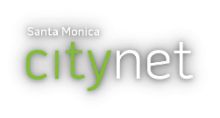Webpass and Its Fixed Wireless Seek Fix for Landlord Abuses - Community Broadband Bits Episode 197

San Francisco is one of the rare cities that has multiple high quality ISPs competing for market share, though the vast majority of people still seem to be stuck choosing only between Comcast and AT&T. This week, we talk to a rising ISP, Webpass, about their success and challenges in expanding their model. Charles Barr is the President of Webpass and Lauren Saine is a policy advisor - both join us for episode 197 of the Community Broadband Bits podcast.
We discuss the Webpass model, which uses fixed wireless and fiber to serve high density apartment buildings where they are allowed in by the landlord. Unfortunately, they have been locked out of many of these buildings and are looking to the city of San Francisco to adopt better policies to ensure a single provider like AT&T cannot monopolize the building. Though the FCC has made exclusive arrangement unenforceable, the big providers are still finding ways to lock out competition. We also talk a little about the role of fiber and fixed wireless technologies, chokepoints more generally, and why Webpass is so sure it could succeed if residents were all able to to choose the ISP they wanted.
This show is 27 minutes long and can be played on this page or via Apple Podcasts or the tool of your choice using this feed.
Transcript below.
We want your feedback and suggestions for the show-please e-mail us or leave a comment below.
Listen to other episodes here or view all episodes in our index. See other podcasts from the Institute for Local Self-Reliance here.
Thanks to Kathleen Martin for the music, licensed using Creative Commons. The song is "Player vs. Player."


